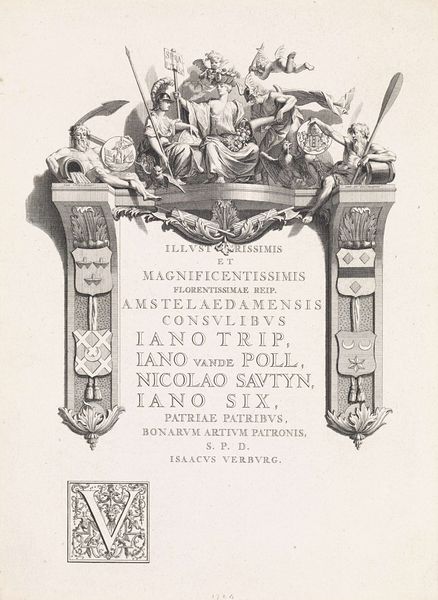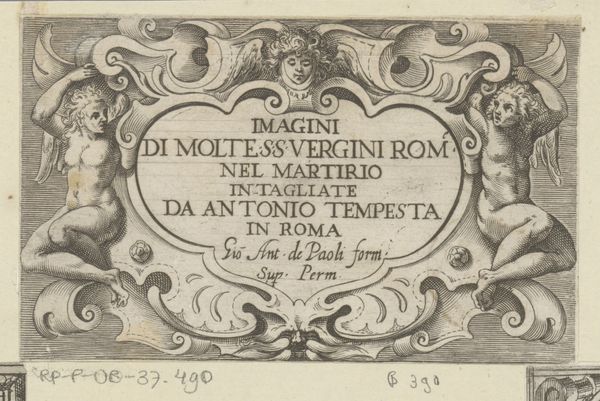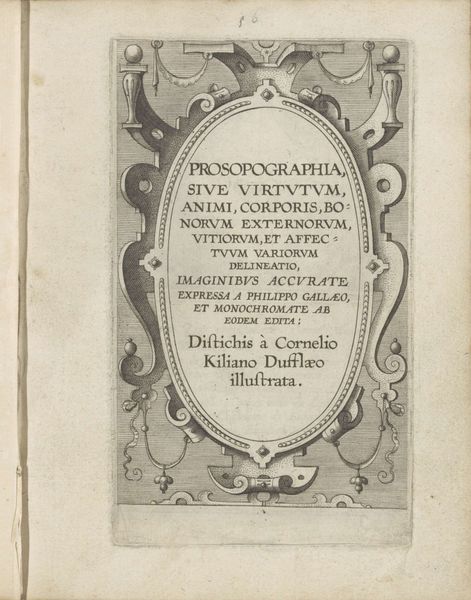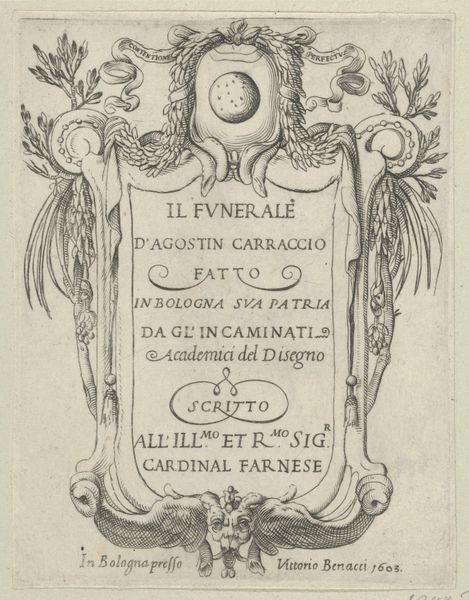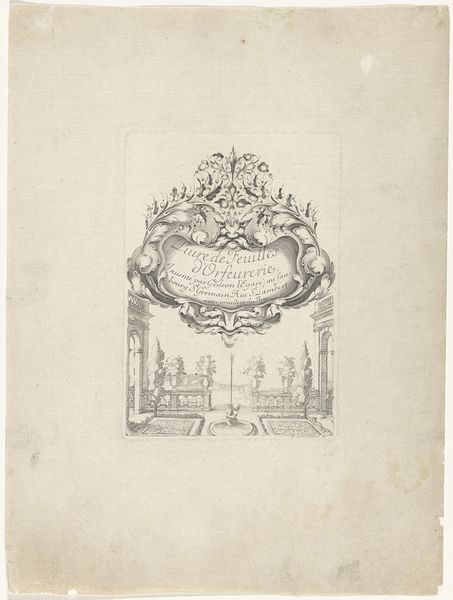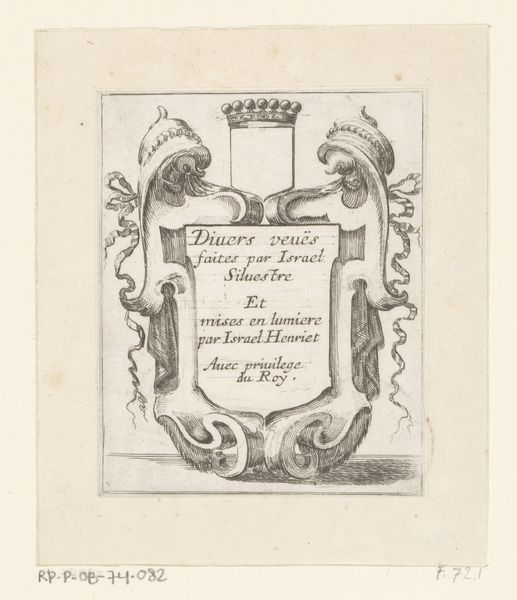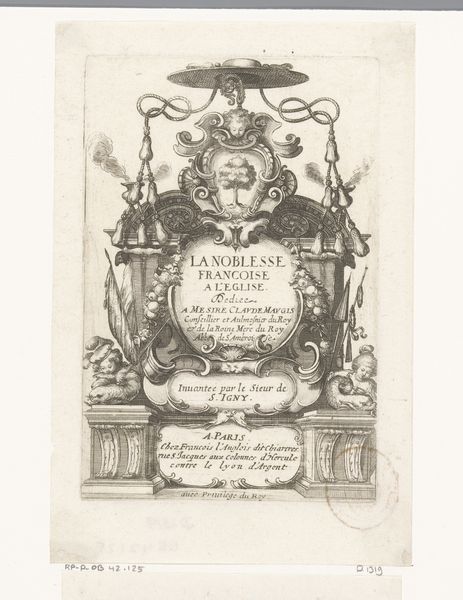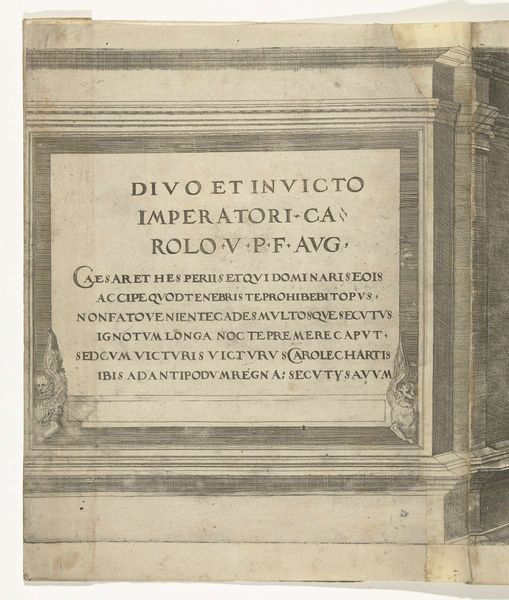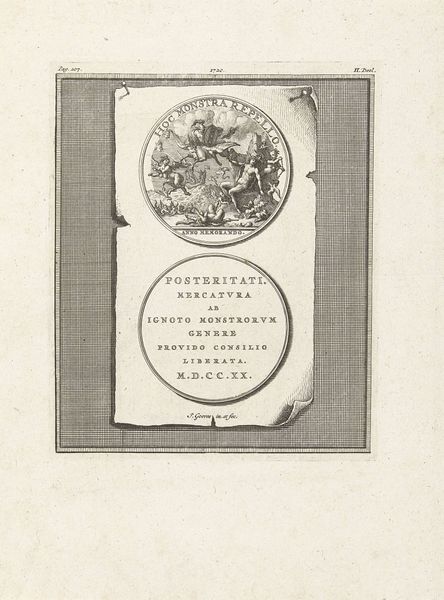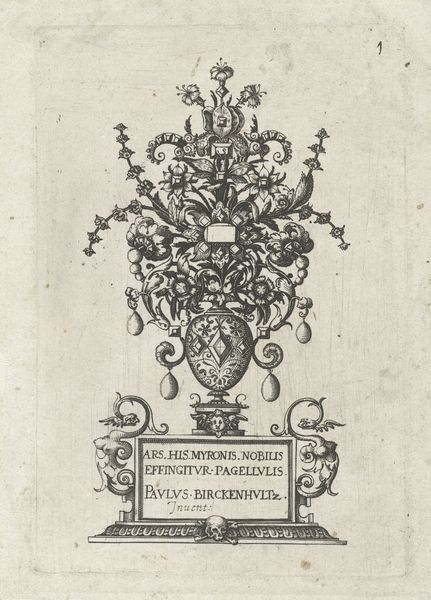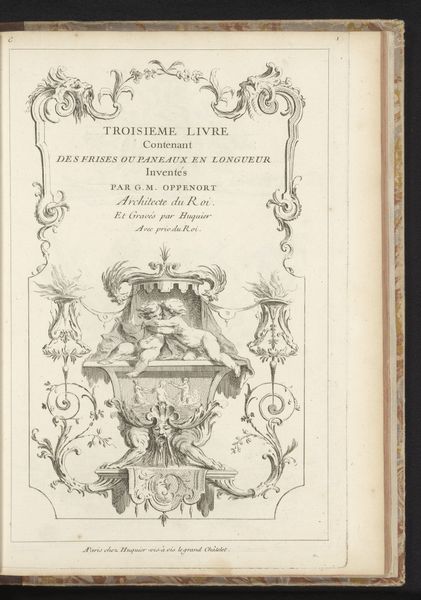
print, engraving
#
portrait
#
aged paper
#
toned paper
#
baroque
#
parchment
# print
#
old engraving style
#
golden font
#
decorative-art
#
italian-renaissance
#
engraving
#
historical font
#
columned text
Dimensions: height 370 mm, width 255 mm, height 25 mm, width 253 mm
Copyright: Rijks Museum: Open Domain
Editor: Here we have "Wapenschild van Vincenzo Giustiniani," a baroque engraving created between 1636 and 1647 by Theodor Matham. It has an antiquated, distinguished feel to it. What can you tell us about this coat of arms? Curator: Ah, yes. To me, this piece whispers tales of power, legacy, and maybe just a dash of the theatrical. Look at how Matham has rendered the Giustiniani coat of arms! A formidable castle sits beneath an eagle, crowned, embraced by those regal eagles! It's not just a family crest; it’s a statement, wouldn't you say? What feeling does it evoke in you? Editor: Definitely grandeur. The composition, with the intricate details and heraldic symbols, creates a sense of importance. It makes me think of royal families. Is there a story behind these symbols? Curator: Absolutely! The castle, most likely represents strength, security, and noble lineage. And those eagles, often associated with imperial power, might be a nod to ambitions that soared quite high, don't you think? Perhaps Matham wanted to give the viewer an inside peek to the significance of lineage and pride during this time. Does the artist's careful crafting make you think of the legacy it embodies? Editor: Yes, especially the gilded text! It adds to the air of significance. Thanks to you, I now see it as less of an antique print and more of a symbolic manifesto. Curator: Precisely! It's funny how art has a way of holding up mirrors to our own curiosities, revealing echoes of history in every line and curve.
Comments
No comments
Be the first to comment and join the conversation on the ultimate creative platform.
